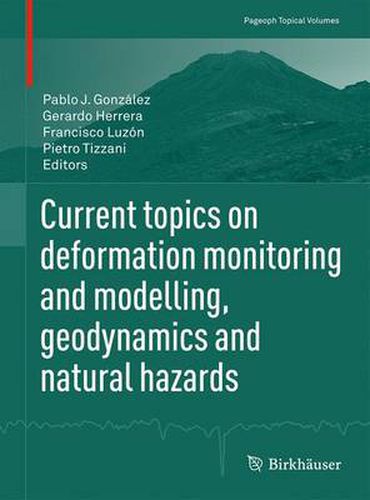Readings Newsletter
Become a Readings Member to make your shopping experience even easier.
Sign in or sign up for free!
You’re not far away from qualifying for FREE standard shipping within Australia
You’ve qualified for FREE standard shipping within Australia
The cart is loading…






Geodynamic and natural hazards processes produce among other effects deformation and gravity changes which can be measured, using space and ground-based techniques. It is widely recognized that obtaining high temporal rate and high spatial resolution data over wide areas could enhance our mapping capability of such hazardous processes. However, it is also necessary to develop new mathematical (analytical and/or numerical) models and methods for a correct interpretation and, eventually forecast. This book is dedicated to the description of theoretical models, inversion techniques and their application to observational geodetic and geophysical data sets in active geodynamic areas and affected by natural hazards.
This book compiles part of the papers presented at the 15th Annual conference of the International Association for Mathematical Geosciences held in Madrid, Spain during September 2-6, 2013. This conference had the special topic of Mathematics of the Planet Earth emphasizing the recent importance of modelling in our understanding of Geoscience problems. In this regard, the session XIII Deformation modelling, Geodynamics and Natural Hazards served to discuss modelling and observational works of structural and deformation processes (e.g., geodesy, seismology) relevant to the study of Geodynamics and Natural Hazards.
$9.00 standard shipping within Australia
FREE standard shipping within Australia for orders over $100.00
Express & International shipping calculated at checkout
Geodynamic and natural hazards processes produce among other effects deformation and gravity changes which can be measured, using space and ground-based techniques. It is widely recognized that obtaining high temporal rate and high spatial resolution data over wide areas could enhance our mapping capability of such hazardous processes. However, it is also necessary to develop new mathematical (analytical and/or numerical) models and methods for a correct interpretation and, eventually forecast. This book is dedicated to the description of theoretical models, inversion techniques and their application to observational geodetic and geophysical data sets in active geodynamic areas and affected by natural hazards.
This book compiles part of the papers presented at the 15th Annual conference of the International Association for Mathematical Geosciences held in Madrid, Spain during September 2-6, 2013. This conference had the special topic of Mathematics of the Planet Earth emphasizing the recent importance of modelling in our understanding of Geoscience problems. In this regard, the session XIII Deformation modelling, Geodynamics and Natural Hazards served to discuss modelling and observational works of structural and deformation processes (e.g., geodesy, seismology) relevant to the study of Geodynamics and Natural Hazards.